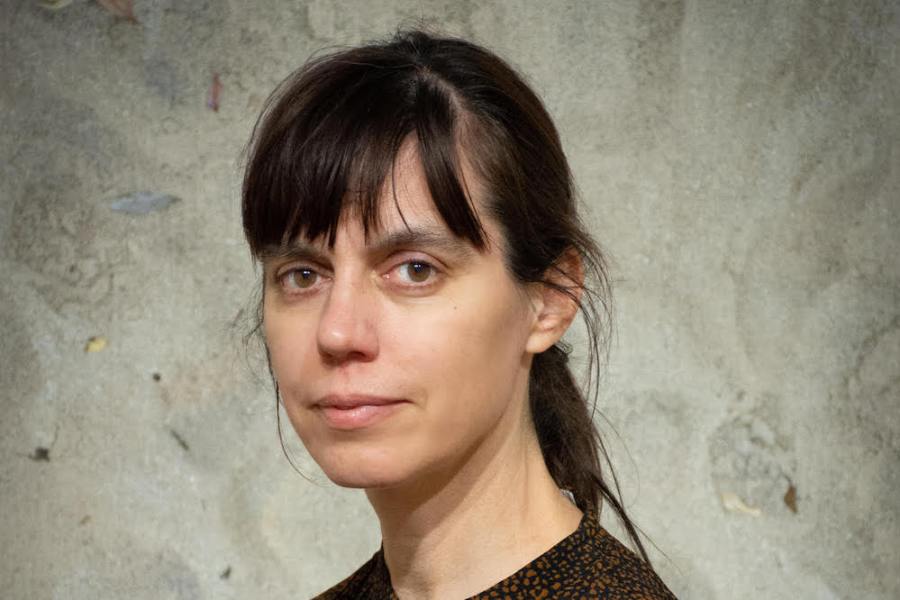In Helene Appel’s hyperreal paintings, unremarkable materials from day-to-day life are the subject of careful attention: a splash of sudsy water is captured in painstaking detail; slivers of yellow pasta look as if they could be snapped between fingers. Working at a 1:1 scale, the German artist enhances the realism of her work by matching her methods to her subjects: slabs of meat or fish are rendered in thick layers of coloured beeswax, the fleshy forms given a three-dimensional quality as they extend beyond the canvas. These paintings are among a number of new works in ‘Correspondence’, the artist’s first solo exhibition in Van Horn in Dusseldorf (until 19 July; by appointment until 2 August.
Putzen (Cleaning) (2025), Helene Appel. Photo: M. Schneider; courtesy Van Horn; © Helene Appel
Where is your studio?
It is in Berlin, in a large factory building from 1912. It’s on a long plot of land that has five courtyards. It’s used by a mixture of artists and people producing various things – there’s a carpentry workshop, a metal workshop and a car workshop.
How would you describe the atmosphere of your studio?
It’s very quiet. I’m on the same floor as a few other artists who I see occasionally, but it’s fairly empty, without a lot of other people around. I was able to decide on the architecture of the space: it’s shaped like an L, and there’s a corridor where I can store things. My room is quite empty, and only houses the things I’m working on.
Dorsch (Cod) (2023), Helene Appel. Photo: M. Schneider; courtesy Van Horn; © Helene Appel
What do you spend most of your time doing in your studio?
I spend a lot of time researching and trying things out. I use several different painting techniques, and each is specific to the subject that I’m painting. So in my studio, I have little stations set up where I work on different things: for example, when I’m working on my paintings of meat and fish I use an encaustic process that I invented using beeswax and a bit of paint, so I have a particular space for that; I have another space for my paintings of soapy floors, in which I use masking fluid to mimic the water being repelled by bubbles. I’m not at home with just one painting technique, so I spend a lot of time experimenting with and customising the materials that I’m planning to use.
What does your studio routine look like?
I spend as much time in my studio as I can. If I have a free day, I could spend hours there. I’m in my studio most days.
Rücklicht (Car light) (2025), Helene Appel. Photo: M. Schneider; courtesy Van Horn; © Helene Appel
Is there anything you don’t like about your studio?
No – it’s perfect for me and I‘m very happy with it.
Do you have visitors to your studio?
I have studio visits sometimes, and artists in the building come by occasionally. I also have studio assistants come in once or twice a week.
Umschlag (Envelope) (2025), Helene Appel. Photo: M. Schneider; courtesy Van Horn; © Helene Appel
Do you ever listen to anything while you work?
I don’t listen to music when I work. Sometimes I listen to a podcast or audiobooks when I’m working on something that involves a long process, but I often like to just spend time painting without listening to anything.
What is the most unusual object in your studio?
I think most of the objects in my studio are quite common, as I don’t paint or collect extraordinary things. I think the things that I hold on to from old paintings might be the most unusual. I’ve painted many piles of dust and sweepings in the past, and I have the dust collected in bags that I’ve archived at my studio. It’s not uncommon, but maybe a bit strange to keep.
As told to Lucy Waterson
‘Correspondence’ is at Van Horn, Düsseldorf, until 19 July, and open by appointment until 2 August.
